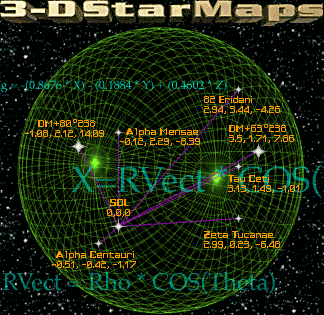To the left is (hopefully) the solution to my dilemma. Rather than wax lyrical about how I came to arrive at my current notion, I'm just gonna hash it out for you.
I'm ditching the FTL system in Starships & Spacemen and replacing it with my "Rabbithole" system. If you don'l know what that is, I wrote a a whole article about it in LAUNCH WINDOW 0.5, so you can read about it there. Go ahead, its Pay What You Want.
In brief, Interstellar travel involves (will involve) seeking out naturally occurring wormholes in close orbit that link certain stars together. These "Rabbitholes" are natural so the temporal/causal effects of using them are accounted for. The causal effects of wormholes are fascinating and will make for cool fiction. Currently, Dr. Luke Campbell is doing just that, and will do a better job that I ever could.
Because we will be handling interstellar travel via wormhole, the movement rules for interstellar travel in S&S are invalidated. This is a shame, as the Energy Point system/ Power Pile Base is one of the fun features of the game. The solution I have to this is to Use the movement rules, modified a bit, in Interplanetary space. This also has the advantage of letting use use Node Maps for the game and rest peacefully in the knowledge that our stars are real.
Refining the movement system of Starships & Spacemen to work in interplanetary space will require a few extra steps and things. One, we have to account for orbital space, and gravity. Two, some sort of Newtonian engine would be appreciated. I mean, its hard to watch a Star Trek film where a ship loses power and stops, and sometimes even starts to sink. Besides, I like the idea of watching starships go at in the frictionless black like a pair of hockey players with a grudge.
Anyway, I don't fancy making my own movement system from scratch, so I plan on borrowing elements from the above shown game: GDW's Triplanetary. As Winchell Chung put it on Project Rho, "This game has the One True way of managing vector movement in two dimensions." He's not the only person to day so, and I bow to superior mechanics.
Anyway, right now I'm thinking of the mechanics of S&S, and the vectors/gravity of Triplanetary for simulating orbits and stuff. The system maps will be a lot easier to make than one would think. Using Winch's Node Maps as a spring board, I can take the star names, pop them into Google, and see if the star has any planets and what their features are. I will be a bit time consuming, but not especially hard...
Anyway, that's what I've got so far, Rocketfans. See you next week!
I'm ditching the FTL system in Starships & Spacemen and replacing it with my "Rabbithole" system. If you don'l know what that is, I wrote a a whole article about it in LAUNCH WINDOW 0.5, so you can read about it there. Go ahead, its Pay What You Want.
In brief, Interstellar travel involves (will involve) seeking out naturally occurring wormholes in close orbit that link certain stars together. These "Rabbitholes" are natural so the temporal/causal effects of using them are accounted for. The causal effects of wormholes are fascinating and will make for cool fiction. Currently, Dr. Luke Campbell is doing just that, and will do a better job that I ever could.
Because we will be handling interstellar travel via wormhole, the movement rules for interstellar travel in S&S are invalidated. This is a shame, as the Energy Point system/ Power Pile Base is one of the fun features of the game. The solution I have to this is to Use the movement rules, modified a bit, in Interplanetary space. This also has the advantage of letting use use Node Maps for the game and rest peacefully in the knowledge that our stars are real.
Refining the movement system of Starships & Spacemen to work in interplanetary space will require a few extra steps and things. One, we have to account for orbital space, and gravity. Two, some sort of Newtonian engine would be appreciated. I mean, its hard to watch a Star Trek film where a ship loses power and stops, and sometimes even starts to sink. Besides, I like the idea of watching starships go at in the frictionless black like a pair of hockey players with a grudge.
Anyway, I don't fancy making my own movement system from scratch, so I plan on borrowing elements from the above shown game: GDW's Triplanetary. As Winchell Chung put it on Project Rho, "This game has the One True way of managing vector movement in two dimensions." He's not the only person to day so, and I bow to superior mechanics.
Anyway, right now I'm thinking of the mechanics of S&S, and the vectors/gravity of Triplanetary for simulating orbits and stuff. The system maps will be a lot easier to make than one would think. Using Winch's Node Maps as a spring board, I can take the star names, pop them into Google, and see if the star has any planets and what their features are. I will be a bit time consuming, but not especially hard...
Anyway, that's what I've got so far, Rocketfans. See you next week!











